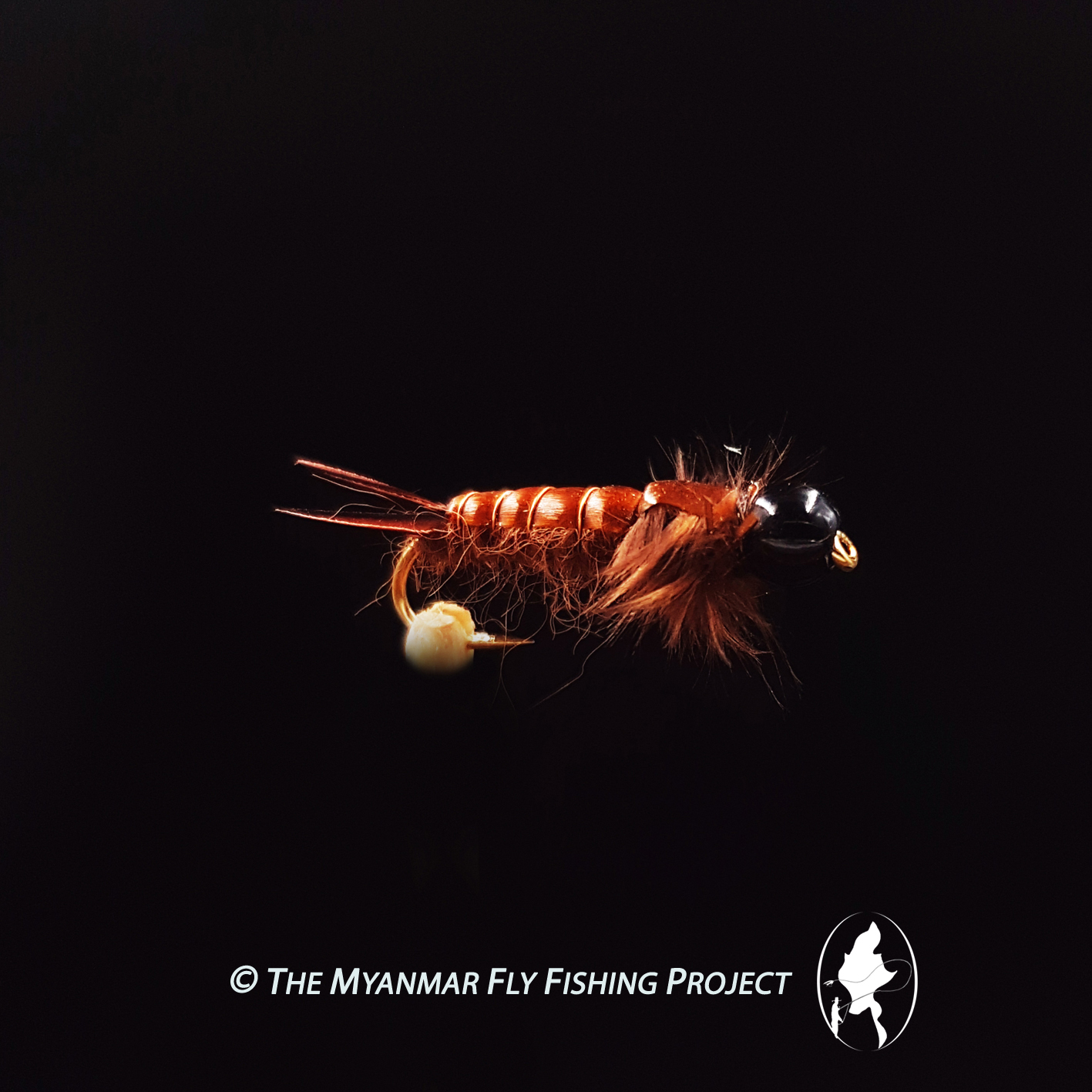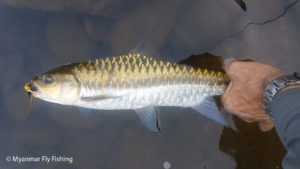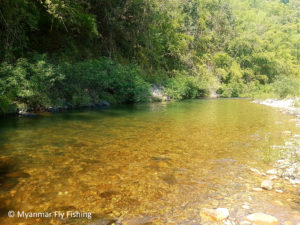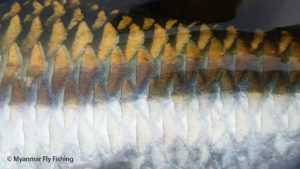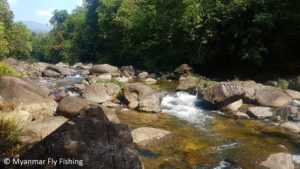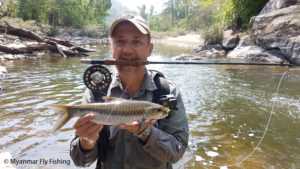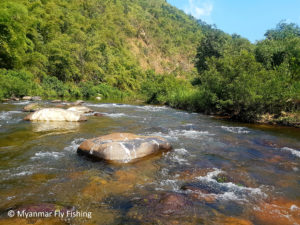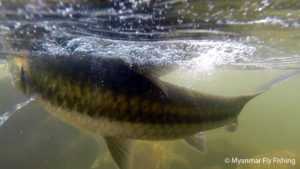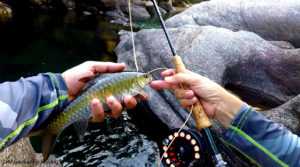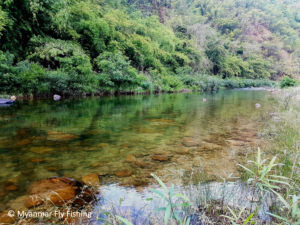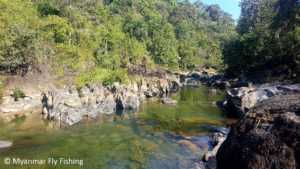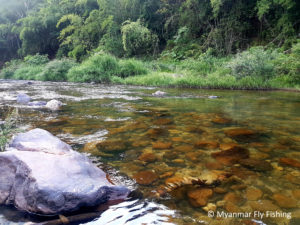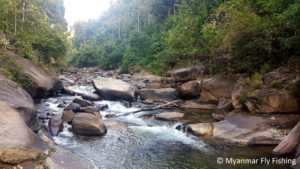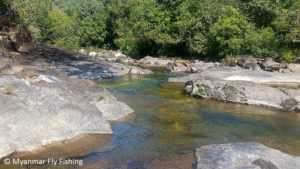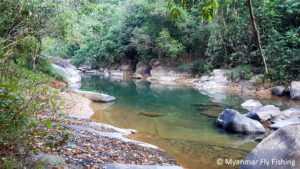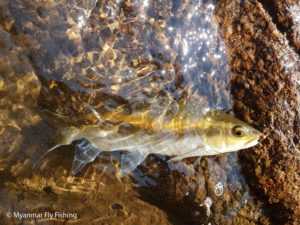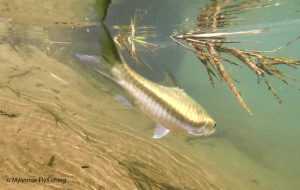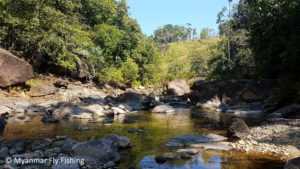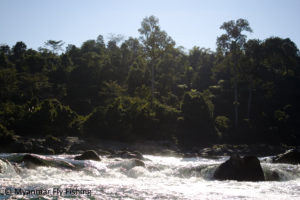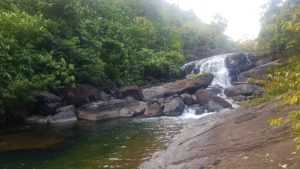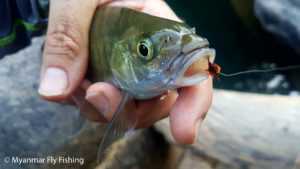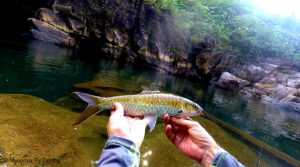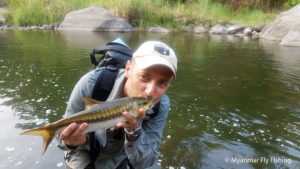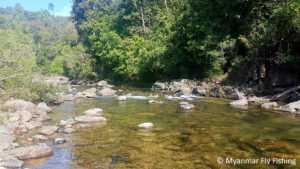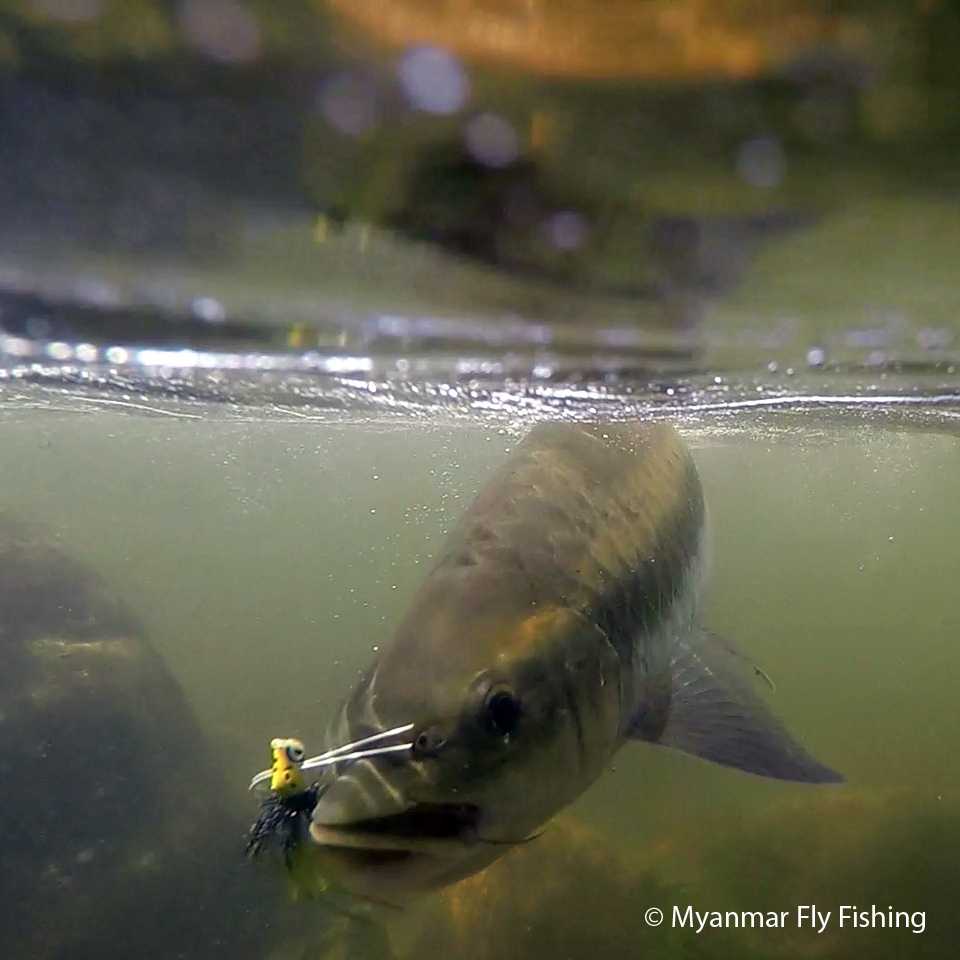
Family: Cyprinidae
Order: Cypriniformes
Myanmar Name(s): none
Occurrence: Native
Description
This species of mahseer is easy to identify thanks to its dark lateral stripe starting behind the head and extending to the caudal-fin. However, it seems to often present important phenotypical variations depending on the characteristics of its surrounding biotope, resulting in darker or lighter colorations, a loss of that dark lateral stripe and sometimes blue colorations that give it its other name “the blue mahseer”.
Biology / Diet / Bahevior
Primarily a predator, this species of mahseer is actually very eclectic and opportunistic in its diet; it feeds on smaller fishes, both aquatic and terrestrial insects along as well as a variety of freshwater crustaceans. It is also knnown to feed on fruits. Gregarious by nature, they live in groups where individuals are usually similar in size.
Adults inhabit clear forested streams and rivers, enjoying swift flowing well-oxygenated water. They tend to disappear when human activities degrade aquatic habitats, as seen in other members of the genus. Mostly sedentary, some individuals have however been shown to migrate for a few kilometers up or down the river. Larger specimens apparently tend to frequent deep pools of main river channels, but also venture in shallow waters when undisturbed.
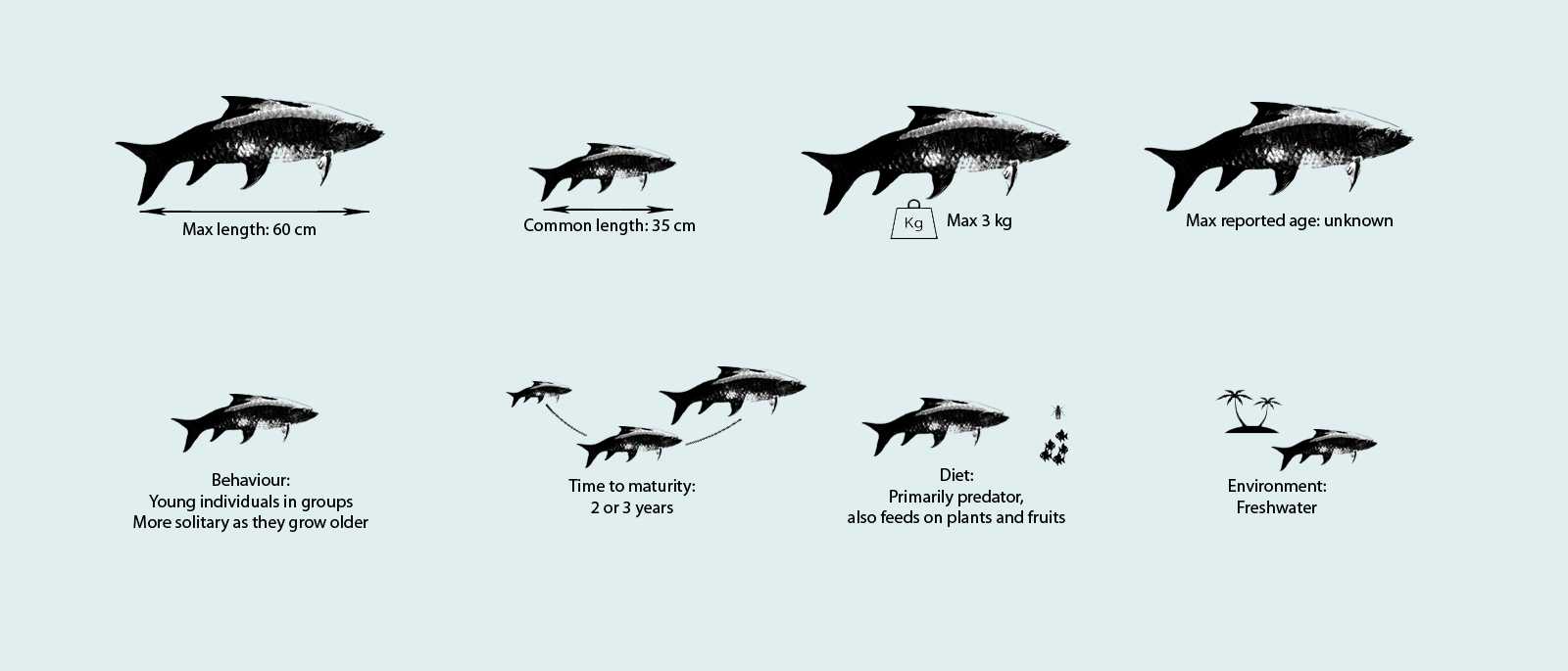

Fly Fishing For Stracheyi Mahseer In Myanmar: What We Understand & Know So Far...
Because this species of mahseer is very eclectic and opportunistic in its feeding habits, it easily takes a fly, wheter a dry fly or a nymph. It can however be picky and refuse flies, leaving the angler wondering what it feeds on. It is also quite shy and easy to scare off. Once an individual has detected a threat, it tends to move erratically in panic, scaring other mahseers in the process; they can however return to a calm and feeding state quite quickly, providing the angler stays still for a while. It fights hard, but do not tend to seek underwater obstacles, generally preferring to fight in open water.









